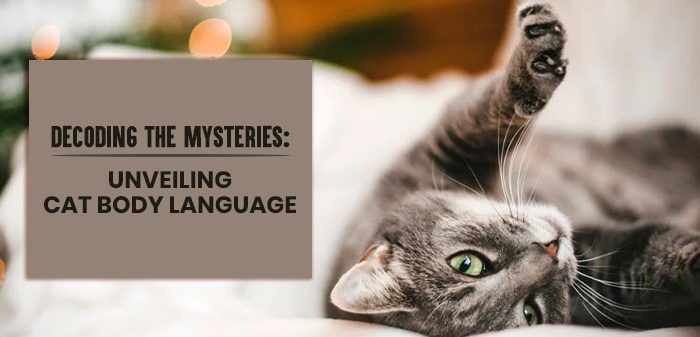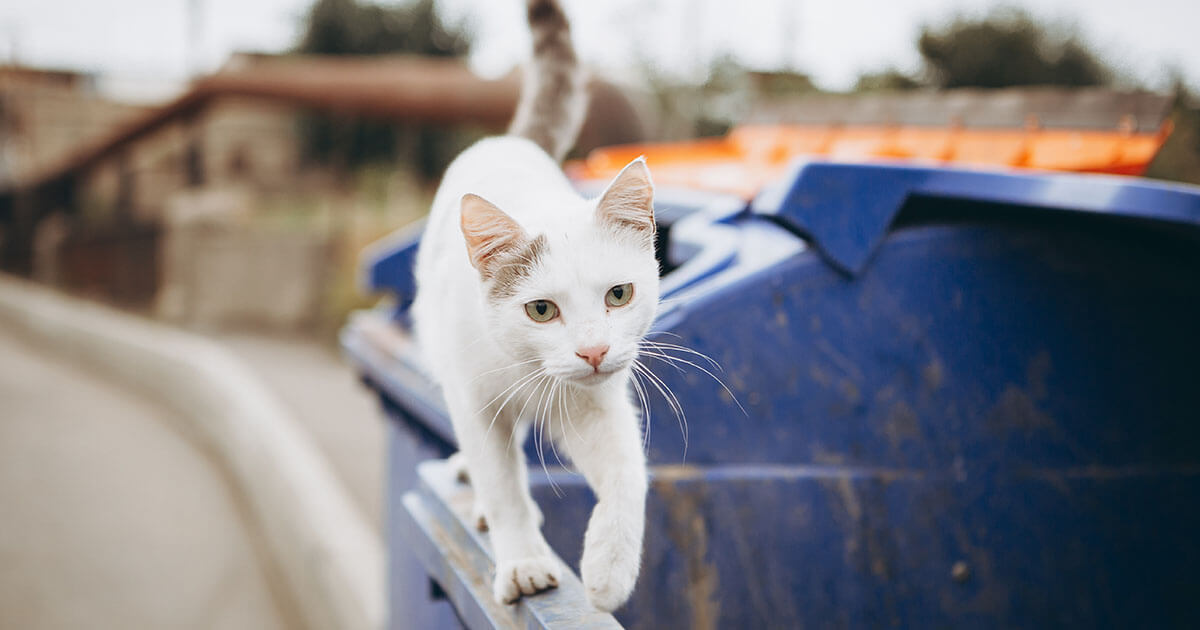Stray cats don’t typically meow because meowing is a behavior cats use to communicate with humans. These feral felines have not established such communication with people.
Understanding the behavior of stray cats provides insight into their survival tactics in the wild. Unlike domesticated cats, stray cats often avoid direct interaction with humans and rely more on body language and scent marking to communicate with other cats.
Meowing is a domesticated trait, primarily used to gain the attention and care of humans. Stray cats, having adapted to a life without human caretakers, do not see the need to meow for food or affection. Their world revolves around the raw necessities of survival. This intro sheds light on the difference in communication methods and practices between stray and house cats, revealing why you may not hear a meow from a stray cat.
Silent Strays: A Feline Mystery
Ever noticed how stray cats seem so quiet? They move through the streets like whispers on paws. This mystery grabs the attention of cat lovers and animal researchers alike. Let’s unravel the secret behind the silent lives of these independent felines.
The Quiet Nature Of Stray Cats
Stray cats often choose silence as their survival strategy. Unlike pets, they must stay hid from dangers.
- Communication: Strays rarely meow to communicate. They rely on body language more.
- Self-reliance: Strays are self-sufficient. They find food and shelter without human help.
- Stealth: Being silent keeps them safe from predators.
Contrast Between House Cats And Strays
House cats and strays lead different lives. This reflects in their behaviors.
| House Cats | Stray Cats |
|---|---|
| Use meows to ask for food | Search for food silently |
| Meow to get attention | Stay quiet to remain unnoticed |
| Lives with humans | Lives solo, avoids people |

Credit: www.budgetpetcare.com
The Communication Toolbox Of Cats
The Communication Toolbox of Cats opens up a world beyond the simple ‘meow.’ While domesticated felines may vocalize with their human companions, stray cats often rely on a more sophisticated system. This system includes body language, scent, and varying sounds. It helps them survive and interact with others without drawing unwanted attention. Let’s explore these methods to understand the silent world of stray cats.
Beyond Meowing: How Cats Communicate
Stray cats choose not to meow often. Meowing is more common between kittens and mother cats. Adult cats communicate in more nuanced ways. Actions such as twitching tails, flattened ears, and arched backs convey messages more discreetly.
Body Language
- Tail positioning can indicate mood and intent.
- Whisker placement shows curiosity or alertness.
- Eyes can signal trust when blinking slowly.
By observing these actions, we get insights into a cat’s state of mind.
Scent And Sound
Stray cats mark their territory and communicate via scent glands. They rub their faces against objects to leave their mark. These scent messages inform others without a sound. Strays also use a range of sounds. These sounds include growls, hisses, and chirps. Each serves a purpose in their interactions with cats and other animals.
| Scent | Sound |
|---|---|
| Face rubbing | Growls (threat) |
| Paw scratching | Hisses (defense) |
| Body rubbing | Chirps (hunting) |
Survival Strategies: The Mute Approach
In the urban jungle, stray cats epitomize the art of survival, often adopting a notable trait: silence. The ‘Survival Strategies: The Mute Approach’ sheds light on why these feral felines opt for quietude over calls. Understanding this behavior can unveil the mysterious lives of street-savvy cats and their instinct to endure.
Staying Silent To Avoid Predators
Stray cats prioritize safety and their muted meows are a testament to this. In the wild, noise attracts unwanted attention. Predators seek out sound, so silence becomes a stray’s shield. To avoid becoming prey, these cats communicate with subtler body language. This way, they stay unnoticed and unharmed in their concrete territories.
Stealth And Survival In Feral Clans
It’s not just about dodging predators; it’s about thriving within their own communities. Feral clans operate on stealth. Every action is calculated, every move is silent. Vocalizing is reserved for essential communication. These cats develop complex social structures, where the silent rule maintains order and cohesion within the group.

Credit: www.youtube.com
The Social Dynamics Of Feline Groups
Outdoor cats live exciting lives. Their relationships are complex and interesting. Let’s peek into this secret world of stray cats and learn why they don’t usually meow at each other.
Hierarchies In Stray Colonies
Cats on the street live in groups called colonies. Like a little town, every cat has a role. Some cats are leaders, and some are followers. These leaders are usually strong and smart. Cats follow their leaders, just like kids follow their teacher to learn.
- Top Cat: The boss of the cat colony.
- Scouts: Cats that look for food and danger.
- Gatherers: Cats that help collect food.
Territorial Behaviors And Social Signals
Stray cats don’t meow a lot as we do. They use other ways to talk. They rub, hiss, and move their tails to say hello or back off. Their world is about space. A cat’s home is its kingdom. They mark it with scent, like a secret note saying “This is mine!”
When cats meet, they sniff each other. It’s like shaking hands. They learn if they have met before. If a new cat comes, it can cause trouble. Cats protect their home. They puff up and stare to look big and brave.
| Signal | Meaning |
|---|---|
| Rubbing | Friendly greeting |
| Hissing | Stay away |
| Tail up | Happy to see you |
| Tail puffing | Defending space |
Human Interaction: Why Strays Remain Silent
When you walk down the street, you might notice stray cats watching you silently. Unlike house cats, strays often do not meow at humans. The silence of stray cats is a survival tactic. These felines have adapted to a life without direct human interaction. Today, let’s explore this intriguing behavior further.
Trust And The Stray Human Bond
Trust plays a critical role in the interaction between humans and strays. Without trust, a stray cat is unlikely to approach or communicate with a person. The development of this bond takes time and patience. A friendly gesture, like offering food, can start building trust. Meowing is a sign of comfort, which means a stray might start meowing once it feels safe around a particular human.
Feeding Behaviors And Communication
- Stray cats observe humans from a distance.
- A silent stare can signal a cat is evaluating if you’re a threat or not.
- Cats associate humans with food but may not meow for it.
- Regular feeding can lead to vocalization from a stray.
Meowing is a way for cats to communicate with their human caregivers. Strays, however, rely on other cues and signals to ask for food. They might follow you quietly or sit patiently nearby. Once a feeding routine is established, strays may begin to vocalize their presence to remind you of mealtime.
The Evolution Of Meowing
Meows are not just simple cat sounds. They are a language developed for human-cat communication. Wild cats rarely meow at each other. Through time and domestication, cats have refined meowing to speak with humans. Understanding why stray cats often remain silent can fascinate any cat lover or curious mind.
Feline Domestication And Its Impacts
Feline domestication traces back thousands of years. Humans started to breed cats for their hunting skills. Yet, something else changed during this partnership. Cats learned to meow. This behavior is mostly absent in wild felines. Domestic cats use meows to talk to humans, not other cats. Stray cats, half-wild, often revert to ancestral ways. They stay silent to avoid attention, which can mean danger in the streets.
Adaptive Behaviors: Meowing For Attention
Meowing evolved as an adaptive behavior for cats living with humans. It’s a way to get attention. Kittens meow to their mothers when they’re hungry or scared. But adults mainly meow at humans. Think of it as a smart survival skill. Stray cats often won’t meow because they don’t see humans as their providers. Their survival depends on staying unseen and unheard. They communicate with body language or subtle sounds instead.
- Kittens: Meow for care.
- Adult Domestic Cats: Meow for human attention.
- Stray Cats: Silent for safety.

Credit: www.goodreads.com
Frequently Asked Questions Of Why Don’t Stray Cats Meow
What Does It Mean When A Cat Doesn’t Meow?
A cat not meowing may simply be quiet by nature or could indicate a health issue. It’s important to observe any other changes in behavior and consult a veterinarian if concerns arise.
What Happens When A Stray Cat Meows?
A stray cat may meow to communicate hunger, stress, or a desire for attention. It’s a vocalization meant to signal its needs or presence to humans or other cats.
What’s The Difference Between A Feral Cat And A Stray Cat?
A stray cat is a domestic cat that has been lost or abandoned, still seeking human interaction. A feral cat is wild, born and raised without human contact, generally avoiding humans.
What Do Stray Cats Do All Day?
Stray cats typically spend their day searching for food, resting in safe spots, grooming themselves, and occasionally interacting with other cats. They also explore their territory and practice their hunting skills.
Conclusion
Understanding the behavior of stray cats enriches our relationship with these feline wanderers. Their silence speaks volumes about their survival instincts and independence. By recognizing the reasons behind their quietness, we better appreciate the subtle ways they communicate and thrive in their world.
Let’s continue to respect and support their needs as they share our urban landscapes.

